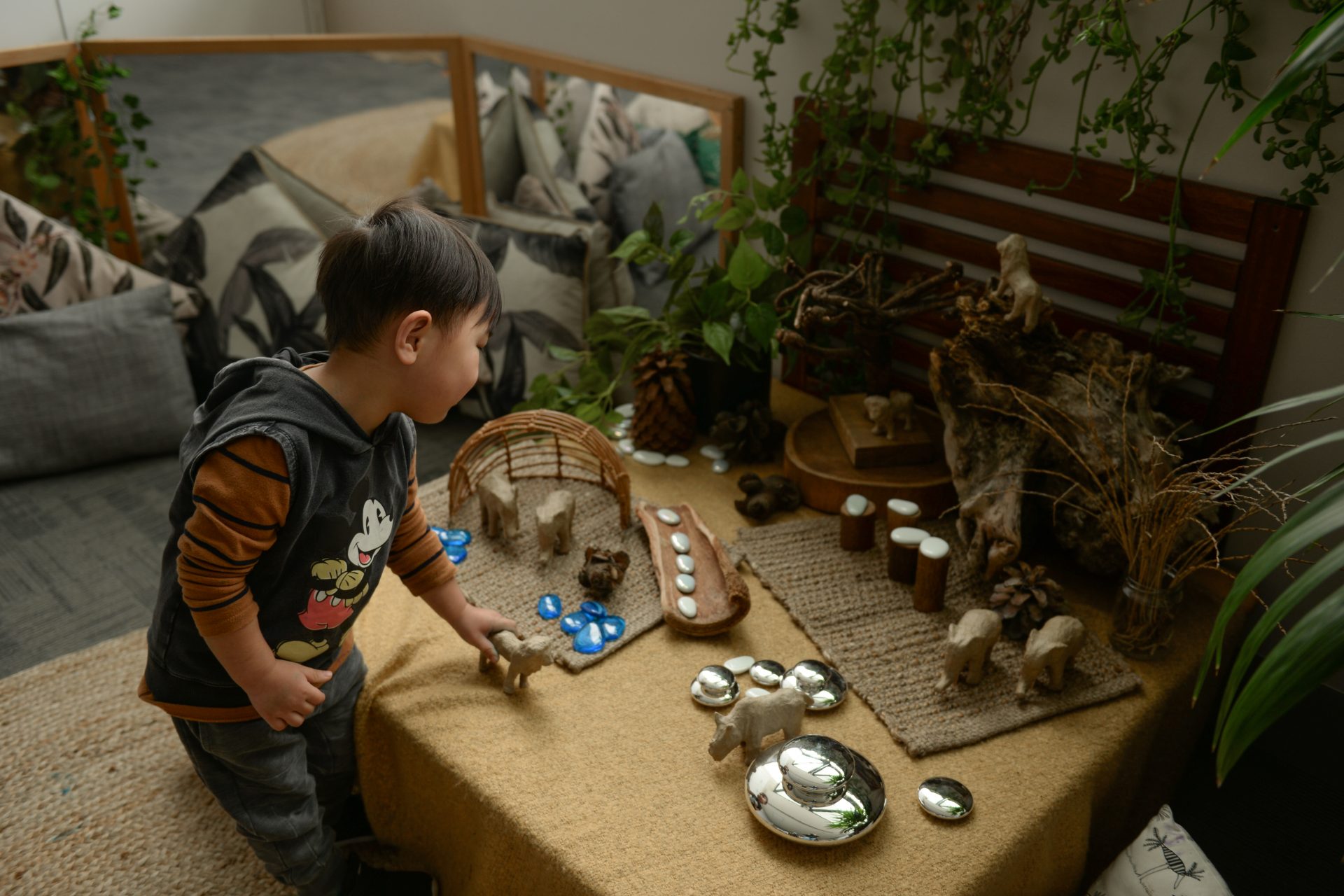
Introducing age-appropriate art projects during the early formative years is a wonderful way to foster creativity and expression. This is a time when the human brain undergoes the greatest advancements, with neural networks being formed that shape the future adult that the child has the potential to become.
A healthy, proactive approach that stimulates this through fun activities is one of the core principles of the Reggio Emilia approach to early childhood learning.
8 Easy Ways to Weave Art into the Early Education Landscape
At every stage of life, the easiest way to learn is through doing something enjoyable. Applying this to the early developmental years doesn’t only stimulate creativity – it’s also a potent way to encourage a child to discover a unique pattern of self-expression.
Enjoyable arts and crafts activities are one of the best ways of doing this. Not only does this promote creative expression, but it also brings multiple other benefits. These include:
- Learning and honing fine motor skills: Innovative art projects utilise various mediums that children can touch, feel and learn how to move and manoeuvre. Manipulating tools, such as paintbrushes and crayons, helps with the development of fine motor skills
- Improve communication: Children can talk about their creative ideas, listen to others and vocalise their thoughts into words, as well as communicating their thoughts through the art they create.
- Learn about shapes and colours: Art projects provide the perfect educational landscape where children gain knowledge through a fun activity, as opposed to structured learning.
- Emotional development: Discovering how to express their emotions, both verbally as they talk about what they’re doing and non-verbally, through their creations.
- Promote socialisation: Enjoyable group art activities provide a great environment to find common ground with others, communicate and form friendship bonds.
One of the guiding principles of the Reggio Emilia approach is that the environment is the third teacher. There is no set curriculum, and each child is encouraged to learn through exploration and to follow their instincts. This is a potent promoter of creativity and expression, allowing the individual to push their own boundaries of discovery and learning as they do so.
This can be woven into learning spaces in so many ways.
- Provide a wide range of art materials: From the obvious – such as paints, crayons, paper – to the innovative – beads, cotton wool, crunchy autumn leaves, twigs, jelly, play dough, sponges, empty toilet rolls, tissues, sand and anything else that is safe for toddlers and young children to handle and discover.
- Create dedicated art project spaces: This could be inside or outside (weather dependent) and an area where children can freely access materials as they choose.
- Encourage free-form designs: Children should be encouraged to let their imagination flow, rather than providing instructions as to what to do. Educators can ask open-ended questions that advocate exploration, emboldening their young students to try different things and work through any problems they might encounter.
- Promote different themes: Without putting ‘rules’ in place, educators can suggest a theme from which a child’s imagination can start. Something simple, such as animals, the sky, home or love can be a springboard from which incredible ideas can form. Children who are provided with the means and environment to explore through art regularly astound the adults around them with their creativity and how they see the world.
- There are no mistakes: The whole ethos of an art discovery project is that there is no right or wrong. OK, things might not go as a child planned, but learning how and why this happened is great for honing problem-solving techniques – plus increases the potential of discovering something brand new that often leads to further exploration.
- Allow full freedom of choice: Let the child work out what medium and products they want to use. This encourages critical thinking, autonomy and allows them to take control of their personal journey of discovery.
- Teamwork: Children can be encouraged to work with others towards a bigger project. For example, making their own addition to a larger animal-themed display or as decoration for an upcoming centre event.
- Include discussion within the creative landscape: Educators can ask questions about a child’s choices. “What made you decide to make a dog out of that toilet roll?” or “Why does your lion have a blue mane?”, for example. Such conversations encourage a child to think more about their actions and understand the reasoning behind their decisions.
Each Evoke Early Learning environment is custom created to inspire children to embrace and learn through art and craft projects. Our childcare philosophy encourages natural curiosity, with curated areas full of different mediums for children to explore and create.
Discover more about our Albert Park and Clayton centres and contact us today to arrange a visit.

Tracey is a highly qualified educator and administrator and brings a strong combination of academic achievement, extensive work experience in the education and business sectors as well as drive and passion to her role as General Manager of Operations at Evoke Early Learning.
Tracey has a Master of Education and an Advanced Diploma of Business and holds VIT Dual Registration to teach in Early Childhood and Primary School settings. She’s also a VIT Trained Mentor Teacher and has worked in ECEC settings as a Director, Educational Leader and as a Victorian Senior Area manager. Her recognition as a state finalist in the recent Director of the Year Awards is testament to her achievements in the early education sector.
Her extensive work experience also included a stint as Head of Curriculum at the Royal Children’s Hospital Education Institute and positions as head of ICT at a number of large primary and secondary schools. Tracey is also experienced in not-for-profit sessional kindergarten settings and long daycare environments, so she has a deep understanding of what’s required to support the needs and expectations of young children, educators, parents and caregivers.
Tracey is responsible for operational management at Evoke Early Learning’s Clayton centre in Oakleigh East and their Albert Park centre in South Melbourne and is deeply committed to leading and driving effective and sustainable service delivery throughout the company.
Tracey is passionate about making a meaningful difference to young children, their parents and the wider community and under her expert guidance, Evoke Early Learning is continuing to raise the bar in quality early education and childcare.


